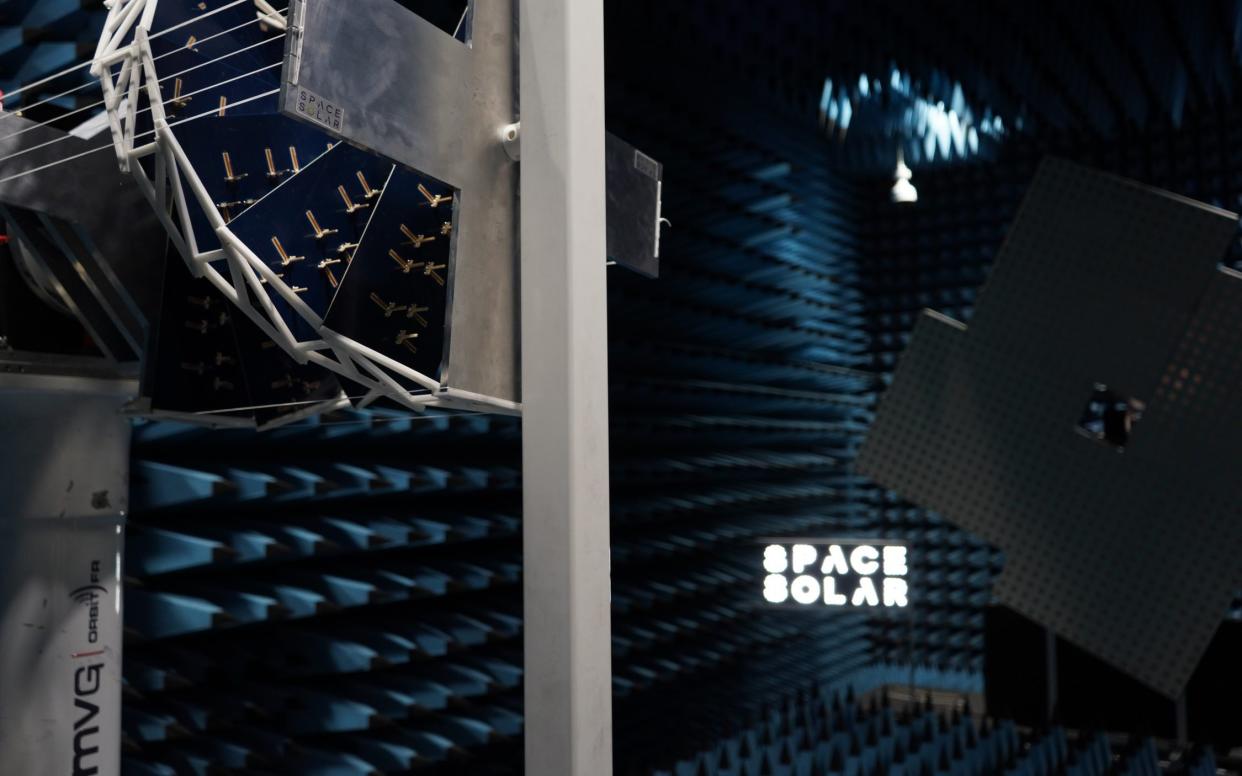Solar power beamed to Earth from space could happen within decade

Solar power beamed from space has become a closer possibility after a British company electrified LEDs wirelessly using just wifi transmissions.
Space Solar, based in Belfast, has demonstrated the world’s first 360-degree wireless power transmission – an important milestone of the technology, which could bring limitless green energy.
The company lit up an LED sign of its name by beaming power through the air in a special anechoic chamber at Queen’s University, Belfast.
Within the next decade, Space Solar wants to commission the first commercial power station in space, delivering hundreds of megawatts – enough to power a large town – and within 12 years, be producing enough energy for a city of more than a million homes.
The team plans to launch its first prototype Cassiopeia satellite within three years, which will power a house from space, followed by a larger version by the end of the 2020s, which could fuel a village.
Proving that it can beam power 360 degrees is crucial because the satellite needs to continuously harvest energy from the Sun, while simultaneously beaming it back down while it orbits the planet.
Martin Soltau, co-chief executive of Space Solar, said: “Space Solar’s successful testing marks a pivotal moment in our mission to revolutionise space based solar power.
“With this demonstration of the world’s first 360 degree wireless power transmission, we’re not only advancing our own capabilities but also laying the foundation for a brighter, cleaner future for generations to come.”
“Space based solar power will be a commercial reality within a decade – much more quickly than most people imagine, and the UK can be a leader in this technology, helping all nations to transition to a clean energy future with affordable, abundant and reliable energy from space”.
Solar-based space energy has been on the drawing board since the 1970s but the technology did not exist to make it happen and the cost of sending solar panels into orbit was prohibitively expensive.
With recent advances in space launch technology, countries are finally starting to take the idea seriously. The Government recently launched the UK Space Energy Initiative (SEI) with the National Grid to explore the possibility of space-based power.
The Department of Energy Security and the UK Space Agency has provided grant funding for the development of the Cassiopeia satellite.
Solar panels in space can produce up to 40 times the amount of power than on Earth because the sunlight is not reflected or absorbed by the atmosphere.
They can also be positioned to avoid any nighttime, meaning power generation would be continuous.
Energy from a solar farm would be channelled into a collecting satellite, which could convert it to high-frequency radio waves and beamed to a rectifying antenna (known as a rectenna) on the Earth.
A report by engineering consultancy Frazer Nash and London Economics found that a space-based solar power station could be online by 2040 or earlier, producing 800 TWh a year with an investment of around £21 billion – around the same price as a nuclear power plant.
The group estimates it would provide power at £59 per MWh, similar to other renewable technologies.
Space Solar aims to deploy satellites in Geostationary Earth Orbit (GEO) equipped with large lightweight solar panels and a system of mirrors to capture and convert sunlight into electricity.
The electricity is then beamed to a ground station on Earth via high-frequency radio waves, providing a continuous and reliable source of clean energy, 24/7 and through all seasons.
The team believes that if the technology proves successful it could be rapidly scaled up and be supplying 30 per cent of Britain’s power by the 2040s.
Europe, China and the US are also currently looking into space-based solar, with Xidian University setting a target of 2028 to have a solar power plant in space.

